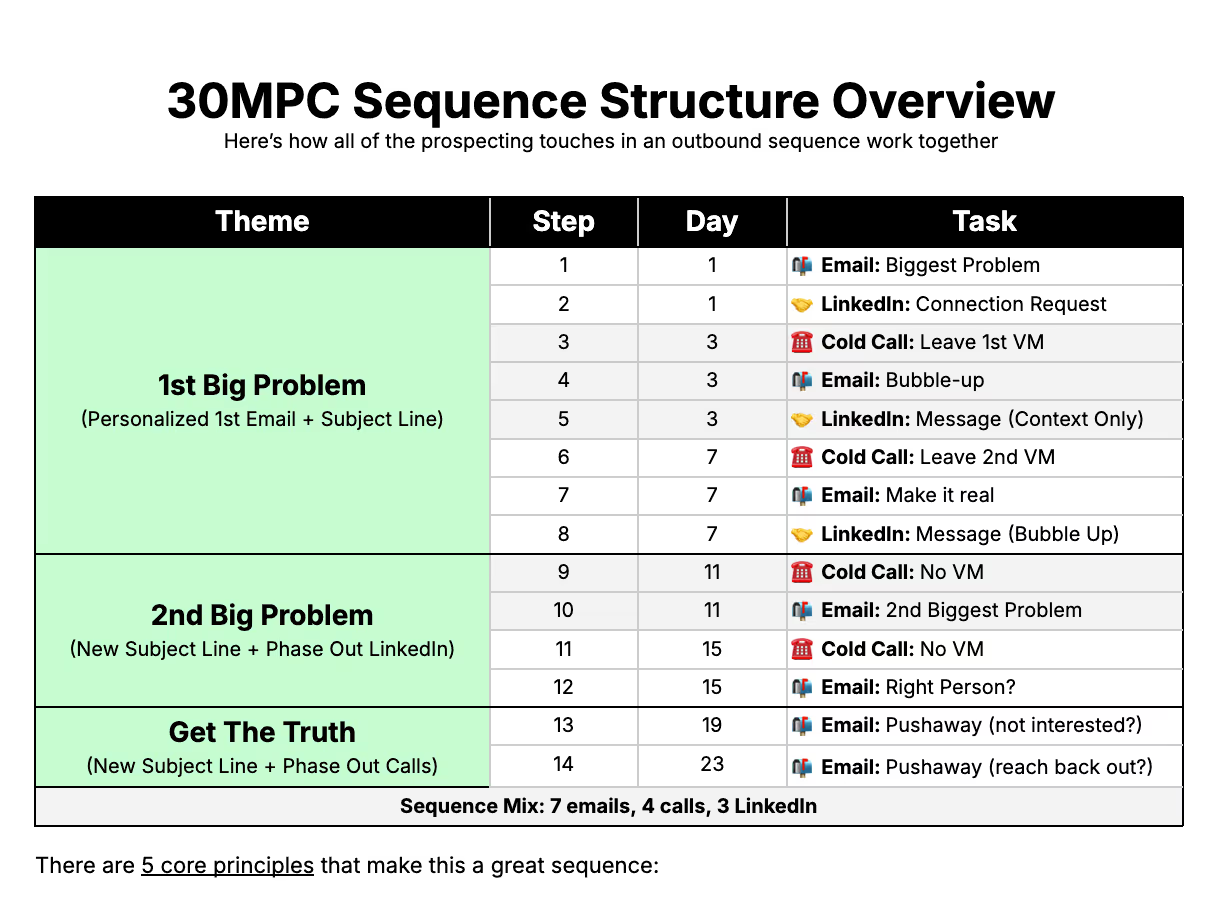
There is an extreme over-rotation in sales on setting next steps. Setting next steps is NOT always a good thing.
🛑 Bad: Never setting next steps
🟡 Okay: Setting steps on every deal
🟢 Good: Setting steps on REAL deals
Instead, first determine if the deal is worth setting next steps with at all. Then, you should recommend the appropriate next step, but only if your prospects have proven that it's worth keeping them in your pipeline.
That's where the Five Minute Drill comes in: Three questions you can ask at the end of every single call to determine if and how you set a next step.
(Note 1: This is part 4/4 of our discovery series. If you missed the previous entries, check out how to set an agenda, uncover pain, and ask discovery questions)
(Note 2: We covered this in June of last year on the noozy, but it's the quintessential last part in the discovery series and a great refresher even if you saw it last time.)
Question 1: Do You Wanna Buy?
If you can practice ONE THING, it's this. Any time you offer a demo, a pilot, a proposal, you are giving your time away to a prospect.
And that's fine. But only if you get something in return.
If you're investing more time with them, you should expect that they won't waste it and affirm that this is actually leading somewhere.
So here's a basic talk track you can use to figure out if someone wants to buy:
[Preface The Investment] Before we talk next steps, we're both gonna invest a good amount of time here together. That might mean pulling in both of our technical teams for a demo or partnering on a business case to your CFO if the next call goes well.
[Pressure Test] So my question is, knowing what you know today, is it worth continuing to invest more time together?
If the answer's no, don't set a next step until they explicitly state what it would take for them to be a yes.
If the answer's yes, great. We can move on to the next question.
Question 2: When do you wanna buy?
You can't properly suggest a next step until you understand their timeline to solve the problem we just agreed upon.
If they want to solve this problem in 3 weeks, we'll use their answer to drive far more urgency than if this weren't a problem to solve for 6 months.
Here's another talk track you can use to suss out timeline:
[Seed The Timeline] Great. You mentioned a few things like X, Y, Z were happening in Q3. I know we're still early, but assuming all goes well in our next few conversations...
[Ask] When's the latest you'd want something like this in place?
If they give you an answer more than 6 months out, you should stop and pressure test whether or not this is even a priority now.
But if there's reasonable intent to buy within the next two quarters, we can *finally* set a next step.
Question 3: How do you wanna buy.
Guess what, the last question isn't a question.
You should always suggest and confirm next steps because you've sold your software far more times than they've bought it.
Frame your ask in terms of their best interest, not yours. Based on what you learned in the first two questions: what is the next step you need to take to solve their problem by the time they want it solved?
And don't just suggest one next step, suggest next-next steps so they explicitly buy into a sales process, not a free 60 minute demo.
It might sound like this:
[Next] Awesome. Keeping that Q3 timeframe in mind, we'd normally spend 60 minutes diving into the solution next week.
[Next-Next] If that goes well, we'd get on the same side of the table and start to socialize this internally with someone like your CRO Jane.
[Validate] But how does that align with how you've bought things in the past?
That's the Five Minute Drill folks. Use it to set next steps on the *right* deals so you never waste your time on deals that aren't real.
***
And if you liked this, Nick actually interviewed me a while back on the show. We broke down the 5 Minute Drill and tons of other discovery tips that'll help you get to P&L-impacting business problems:

















